While most airports aren’t known for their art, the murals and sculptures that occupy the walls of Denver International Airport have sparked interest and intrigue over the years.
D.I.A. has not only made a name for itself as one of the best airports in the U.S., but has also been called one of the best airports for art. We dive into what each piece of artwork means and represents. From the iconic Blucifer statue welcoming guests into the Mile High City to the murals that feed conspiracy theories, this airport has some astonishing works of art.
Here are some of the most famous artworks inside the Denver Airport, their location and meaning, in no particular order:
In Peace and Harmony with Nature
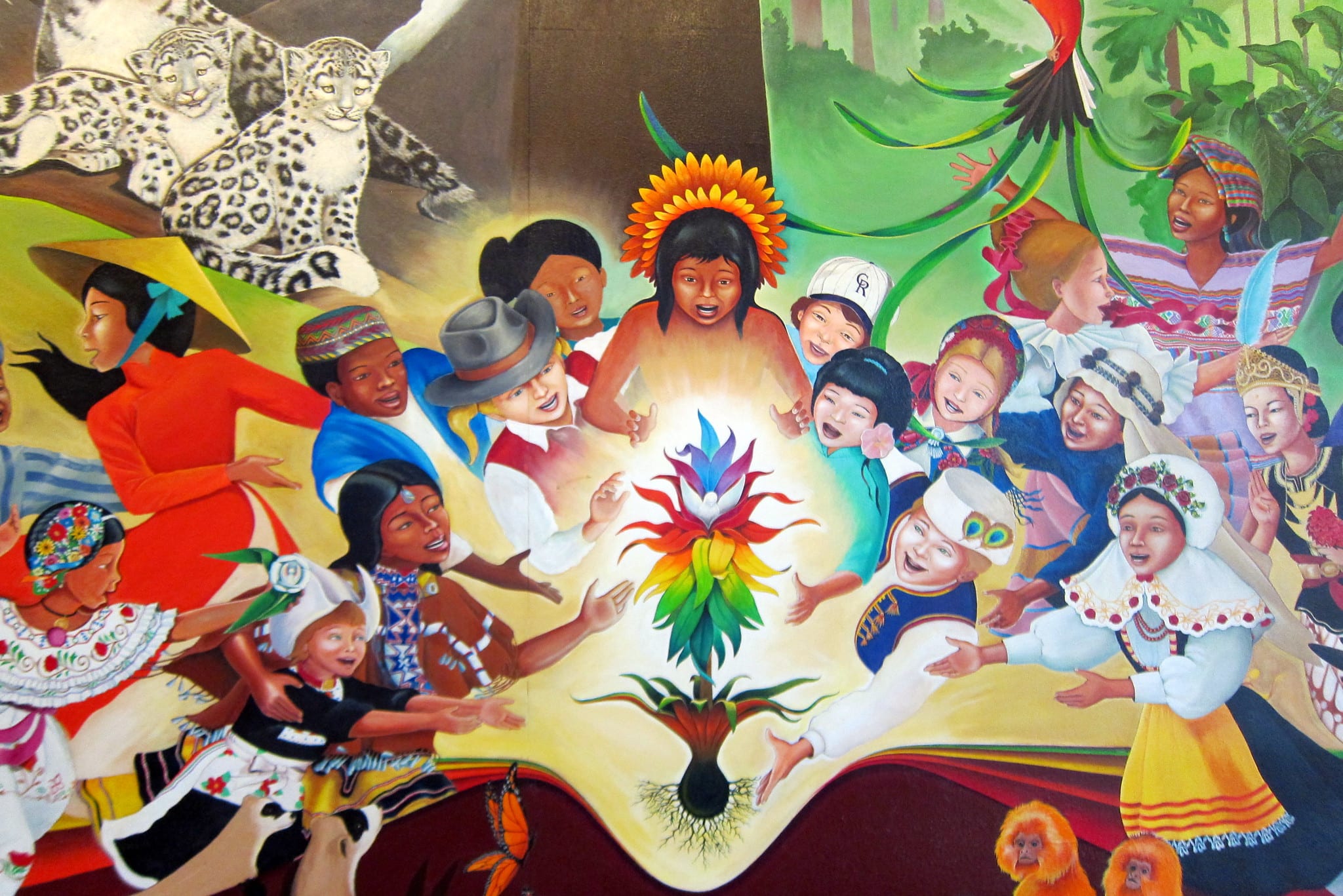
This particular mural resembles the social realist murals of Mexico and highlights the modern concerns about the destruction we are doing to our environment. “In Peace and Harmony with Nature” is divided into two thoughts, with one side portraying the destruction we are doing to our world and the eventual end of life, while the other side depicts humans coming together to bring life back to our planet Earth.
A common theme amongst most of Leo Tanguma’s work, that he looks to explore and extend his portrayal of the struggle for human liberation and democracy.
- Where: In storage during the construction of the Great Hall
- Artist: Leo Tanguma
Children of the World Dream of Peace
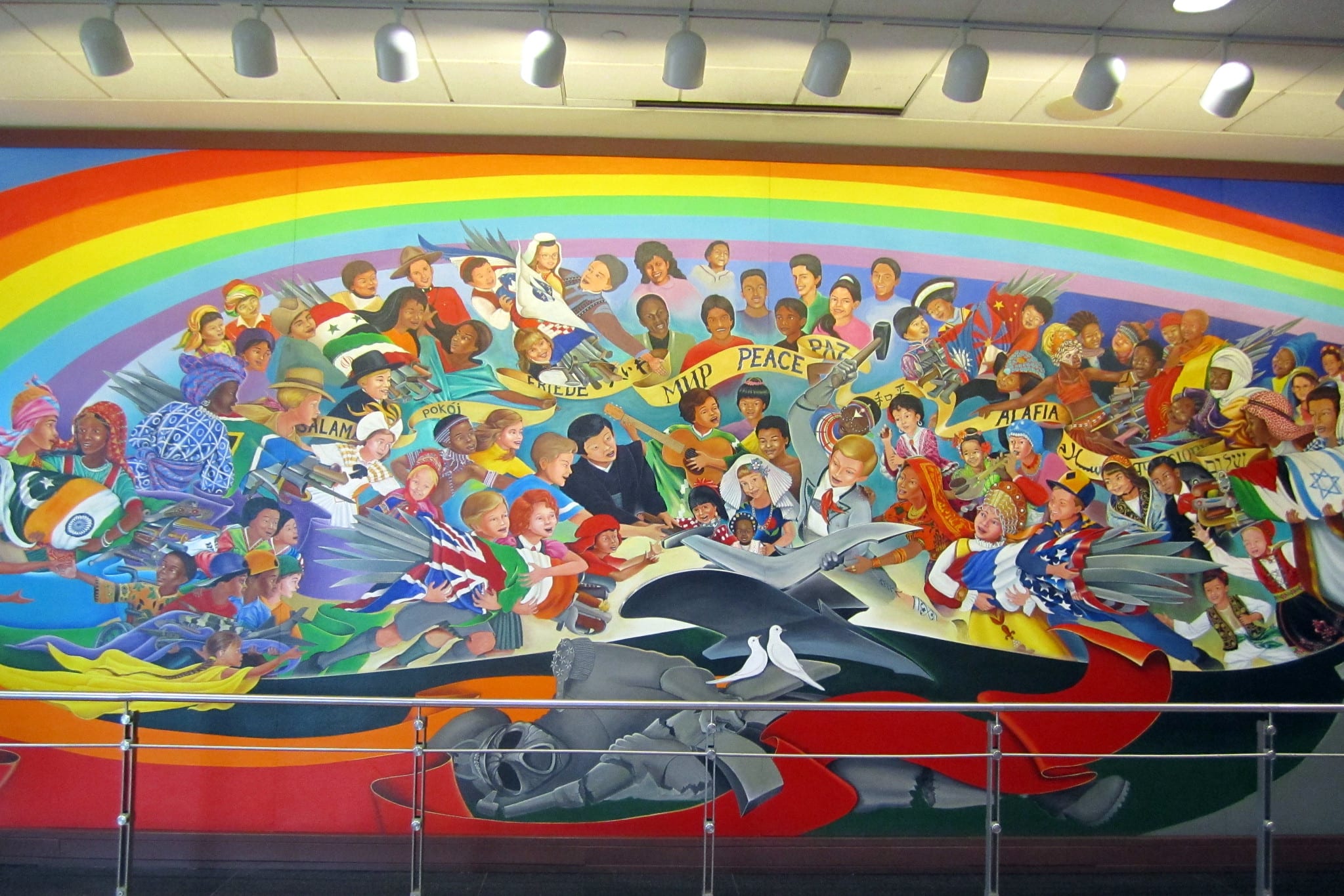
This powerful mural greets passengers as they enter the baggage claim area. While currently being stored elsewhere during the airport’s construction phase, “Children of the World Dream of Peace” has garnered the attention of many traveling passengers. The same artist of In Peace and Harmony with Nature, Leo Tanguma, expresses again his desire for a society without violence.
He constructed the mural to represent, on one hand, the sadness of war, while on the other hand, the other side of the painting illustrates happy children from around the world celebrating world peace.
- Where: Temporarily stored during construction
- Artist: Leo Tanguma
Art Chronicles
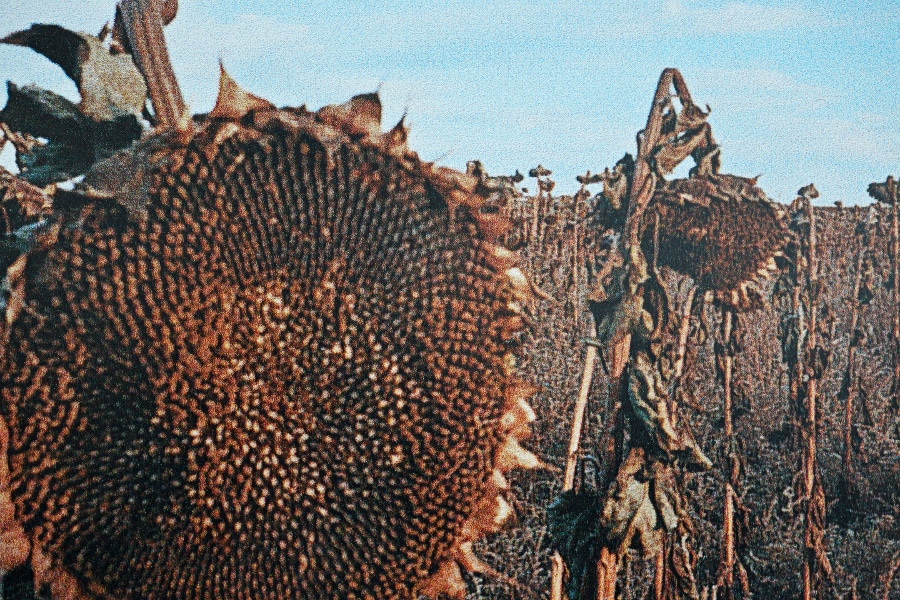
This is a photographic series based on the experience of the photographer, Alex Sweetman, during the building of the Denver International Airport and what it meant to him to witness this change. The murals consist of seven photomurals and 100 archival photographs, all recording the airport’s construction and what that represented to the environment of the high plains. Alex is a well-known photographer with works all across the U.S. and Mexico.
He currently works as an ASTC Representative at the University of Colorado Boulder.
- Where: C Gates, East and West End
- Artist: Alex Sweetman
America, Why I Love Her
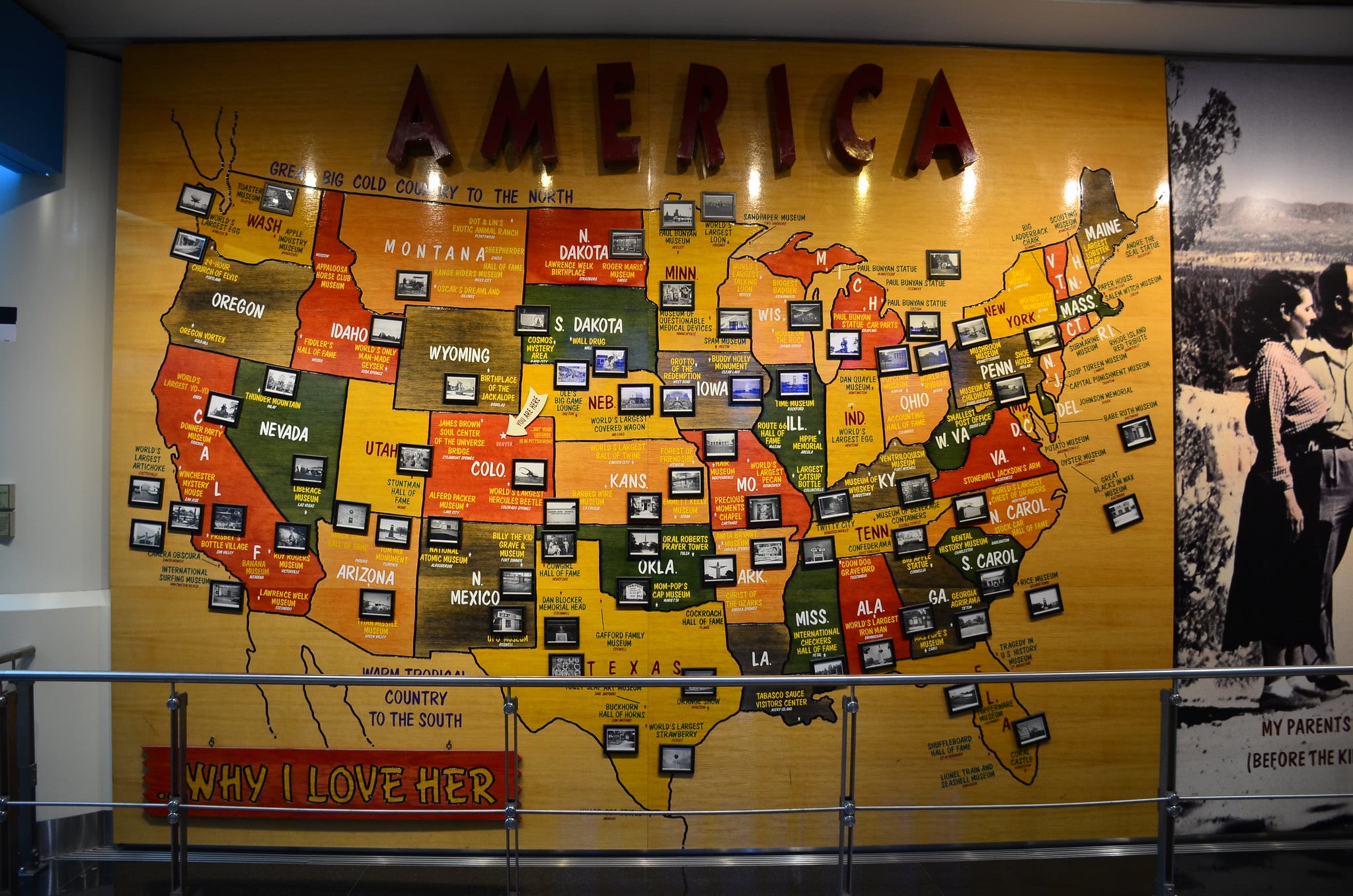
In keeping with the travel theme, this painting is a representation of the artist, Gary Sweeney, road trips he took with his family as a child. Using old postcards and photographs, the painting highlights monuments, roadside attractions, and various tourist spots throughout the United States. Sweeney, who now lives in Texas, worked for the Denver International Airport when it was first built as an airline baggage handler, a job he held for 35 years to support his artistic endeavors.
- Where: Temporarily stored during construction
- Artist: Gary Sweeney
La Memoria de Nuestra Tierra

The translation of “La Memoria de Nuestra Tierra” is “Our Land Has Memory”. This mural dives into the idea that the land we occupy keeps the memories of the stories of the past with those who have inhabited it. It represents the migration of Mexicans fleeing during the Mexican Revolution, from El Paso up to Colorado to find work with the railroads and gold mines.
Look closely and you will see historical Latino figures, including the artist’s grandfather, who struggled for equity in Colorado. Baca, whose work can be seen in various streets within metropolitan and urban cities, has established herself in the art world by creating giant murals that focus on the relationship of history, people, and place.
- Where: Jeppesen Terminal, Level 5, Southeast
- Artist: Judith Baca
Mile High and Rising

This mural by artist Marcus Akinlana depicts the spirit that African Americans brought to Colorado and the Old West. To help bring some perspective to the painting, the artist chose to instill the historical figures of Barney Ford and Aunt Clara Brown. As both founding members of the state of Colorado, Ford and Brown represent, for the artist, the male and female representations of African American pioneers who ventured out west.
As part of the dynamic stories of the African American pioneers who came to Colorado, the artist applied several techniques in the making of “Mile High and Rising”. He used a combination of painted surfaces on aluminum and bulletproof glass.
- Where: Jeppesen Terminal, Level 5, Southwest
- Artist: Marcus Akinlana
Notre Denver
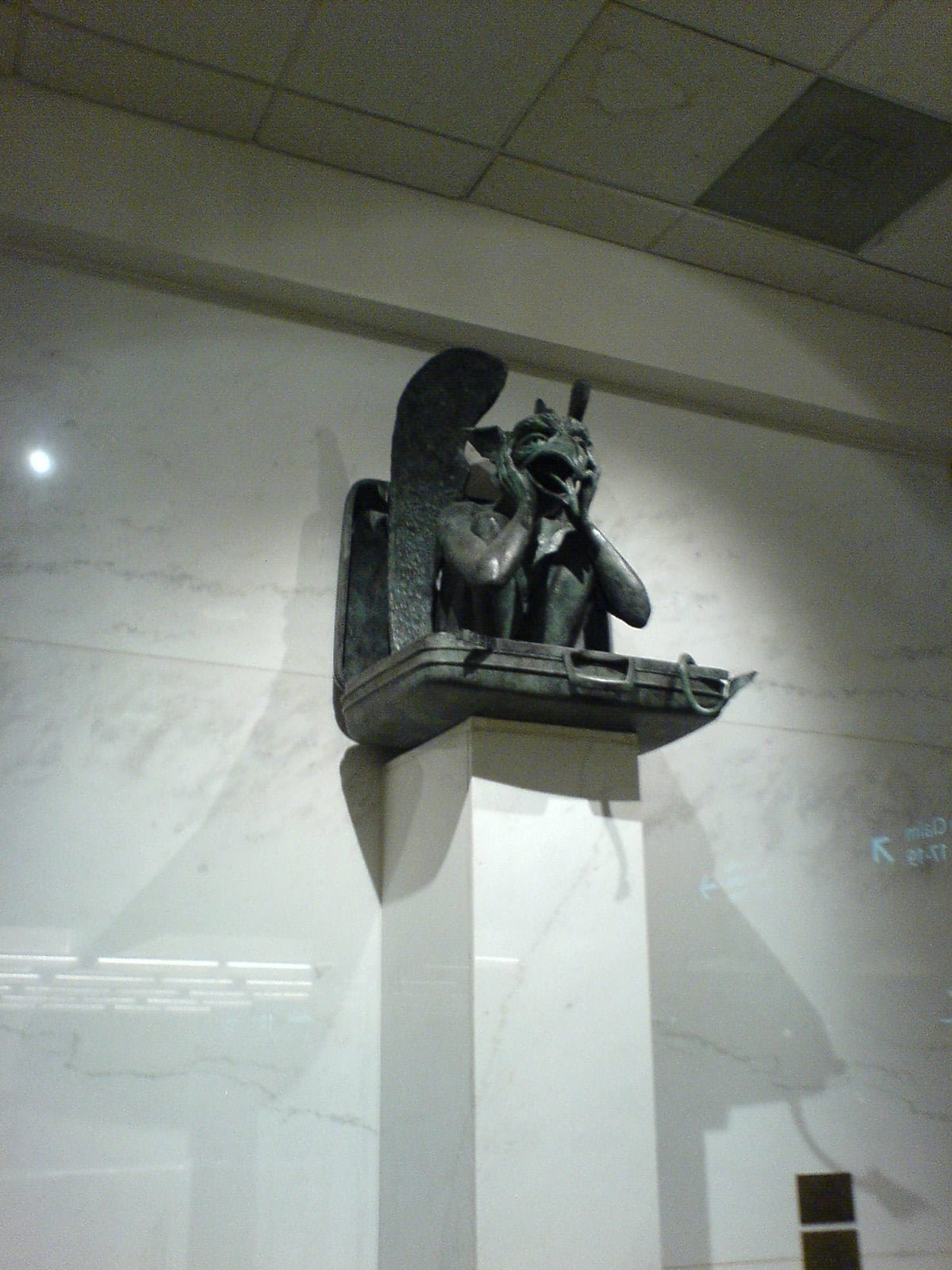
While not your typical artwork found at Denver International Airport, “Notre Denver” represents a unique twist on airport artwork. The work consists of two bronze gargoyles sitting inside suitcases, placed at either end of the baggage claims area. Gargoyles, while for some might represent something disturbing, historically they were placed in front of buildings to help protect the area.
Today, “Notre Denver” helps to protect the travelers passing through DIA and ensure the safe arrival of their luggage.
- Where: Jeppesen Terminal, Level 5, west side between doors 506 and 508; east side between doors 507 and 509
- Artist: Terry Allen
Kinetic Air Light Curtain
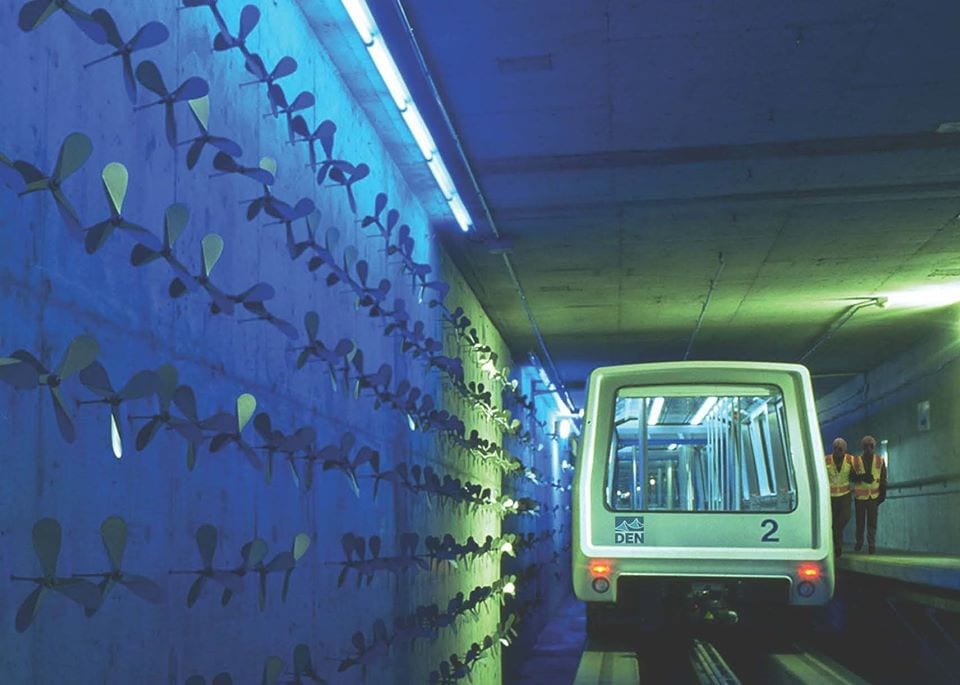
This particular installation consists of exactly 5,280 propellers (to represent each foot leading to Denver’s known elevation of a mile high) laid out on a grid system. The “Kinetic Air Light Curtain” changes formation as the train passes. The propellers, which run the entire mile of the train’s route, are activated by the light from the train and wind generated by the train to create a unique confluence of energy and sound.
- Where: Jeppesen Terminal, Passenger Train Tunnel, East Side
- Artist: Antonette Rosato and William Maxwell
Mustang
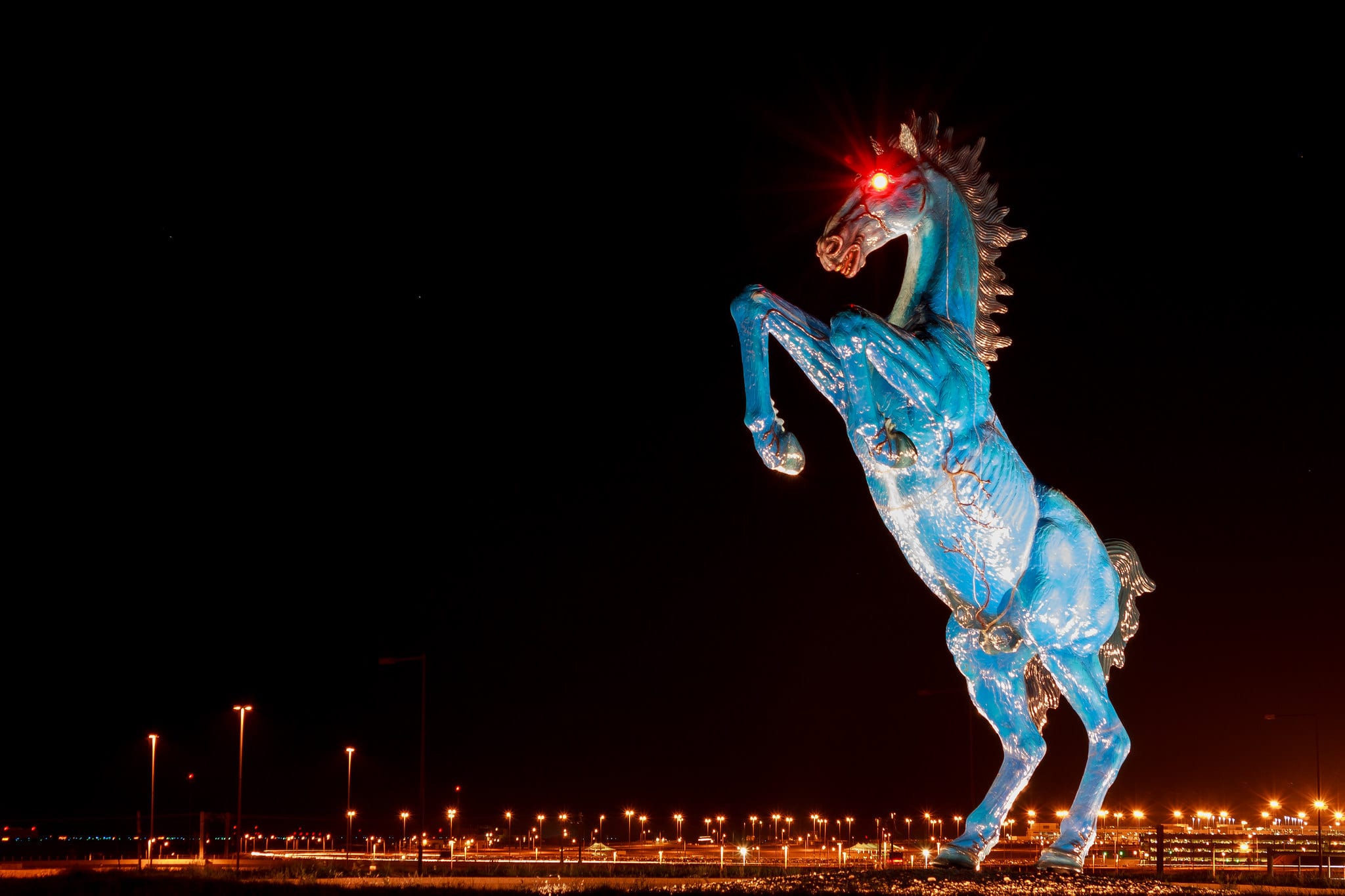
Perhaps one of the most iconic pieces of artwork at D.I.A. is “Mustang”, or rather “Blucifer,” the statue that greets travelers as they approach the airport. This 32-foot case-fiberglass sculpture beams brightly with its blue color and red eyes. The story behind “Mustang” is just as intriguing as the sculpture itself.
In the middle of the project, a piece of the sculpture fell upon Luis Jimenez, crushing his leg and splitting an artery. After his passing, Jimenez’s sons took over the completion of the project. The sculpture is meant to represent the power and freedom of the American Mustang.
- Where: Pena Boulevard, approaching DIA
- Artist: Luis Jimenez
These are some of the most iconic paintings, statues, and pieces of art within the Denver Airport’s massive property. It’s only a fraction of the art showcased. Arrive early for your next flight and take a moment to walk around the area. See the amazing collection, in both quantity and quality, of art around Jeppesen Terminal, Concourses A, B, and C.
You can read up on the great restaurants inside Denver Airport to find a delicious place to pause and dine. Your next journey starts as soon as you reach the airport.

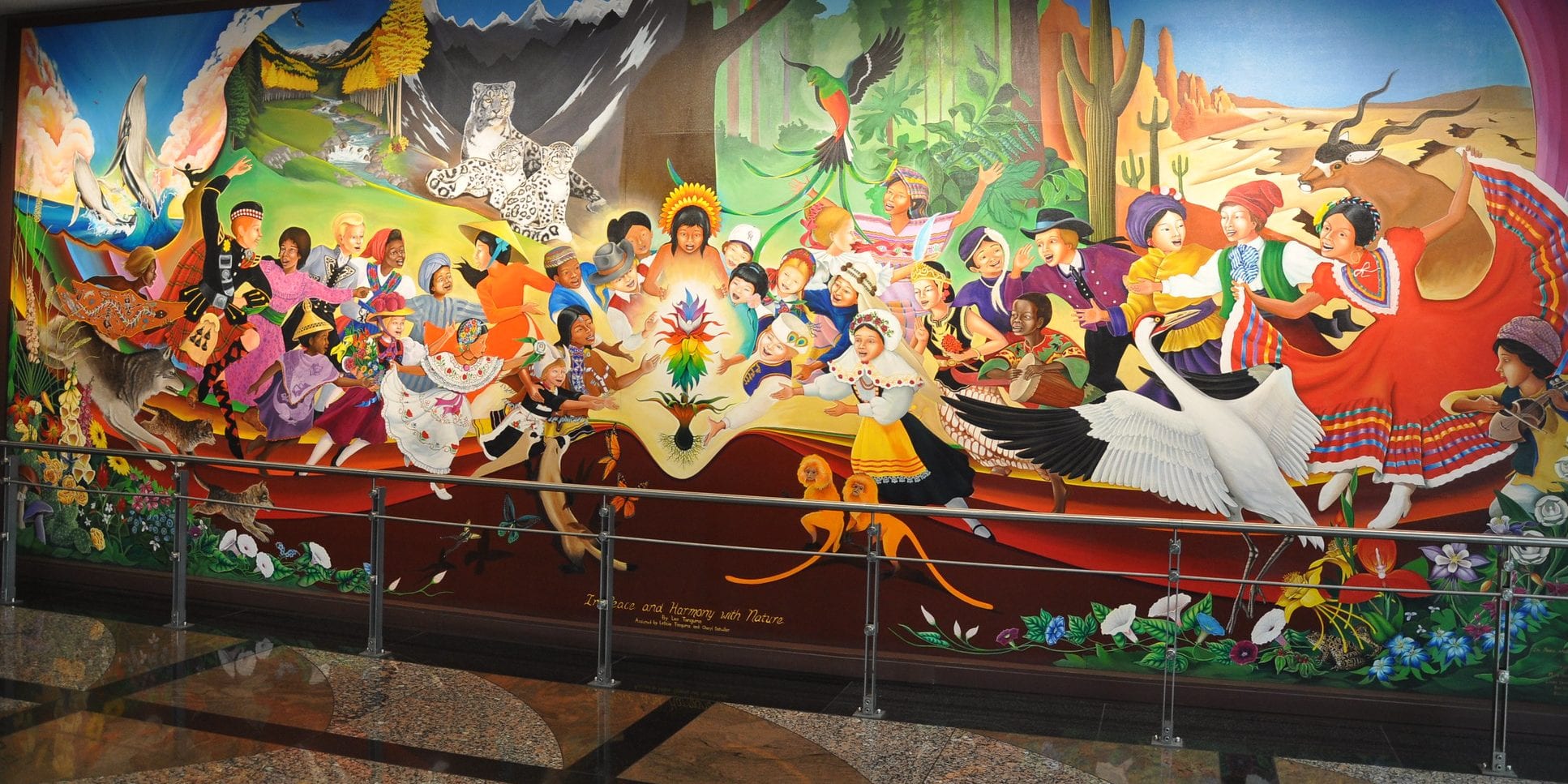
 4 Ghost Towns near Leadville, Colorado
4 Ghost Towns near Leadville, Colorado